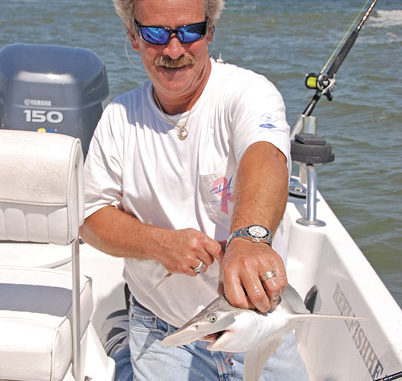
Bonnethead sharks provide great summertime action in Charleston area.
After anchoring up in one of his favorite fishing holes in Charleston Harbor, Capt. Rick Hiott set about baiting and fan-casting rods around the stern of his center-console boat.
Summertime guiding for Hiott typically means putting his clients on numbers of plus-sized bull redfish. In all fairness to the fish, his techniques don’t vary a great deal regardless of the species of bottom-dweller he’s after. He starts his days by collecting a tank full of fresh bait: the menhaden that abound in the harbor during the summer. For good measure, his bait supply typically includes a dozen or so blue crabs, which he gets from commercial crabbers making their morning trap runs. Big redfish relish blue crabs.
With three cut baits and one chunker crab soaking in the brine, it wasn’t long before Hiott (843-412-6776), was onto a fish. After a spirited battle with a fish obviously of shark and not redfish proportion, Hiott decked a 3-foot bonnethead shark, removed the hook and returned it to the deep.
“That was the crab,” he said, dropping the fish — which appeared to be grinning from under its angular forehead — back into the water. “Bonnetheads love ‘em. They’ve been pretty thick in here since the water heated up.”
Hiott caught four more bonnetheads before the tide filled in, and all but one of them was caught on the crab. He said that very few of his clients ever ask to target bonnetheads, even though there is a pretty reliable pattern for them during the summer. Most of the time, it’s the other way around; he resorts to using crabs for bait since most of the blacktip, Atlantic sharpnose and other coastal sharks are more likely to turn their noses up at crabs, giving a bull red a better chance to find it.
On the days when the big redfish get tight-lipped, Hiott’s clients are often more than happy to complete the day shark fishing, since sharks become exceedingly plentiful during the summer. If it’s just sharks in general they’re after, one of Hiott’s best spots is to go to an area of the harbor known as the Middle Grounds, an area where the bottom terrain is very irregular with sharp drops and changes in bottom contour.
“The green side is the best,” he said. “That’s the side that drops off into the shipping channel. All kinds of sharks work this area, and it’s also a good place to find a big redfish if some of my other spots aren’t producing. We catch a lot of bonnetheads in this deeper water, but they really prefer the shallows.”
Hiott also targets bonnetheads in skinny water, putting in on the Mount Pleasant side of the harbor and fishing the waters around Bulls Bay, Capers Inlet and Dewees Inlet. It’s important to find relatively quiet water, free from summer sports enthusiasts, as Hiott actually sight-fishes for the sharks in shallow water.
“You can see them tailing, just like the redfish” said Hiott, who targets shell points, oyster rakes and sand bars. Using either his trolling motor or a push pole, he can ease around in the shallow water, watching for a combination tail and dorsal fin slicing the water.
“It’s best at low tide when everything pulls out of the grass,” said Hiott. “When the water is moving, they’ll root around on the bottom looking for crabs. Like any kind of sight-fishing, you need to be quiet and use a stealthy approach. The best thing to do once you see one is anticipate where he’s headed and cast a half-crab out in front of him.
Although bonnetheads are accustomed to eating whole crabs and have no trouble devouring a large blue crab in one bite, Hiott suggests cutting a legal (5-inch width) blue crab in half for bait. By cutting the crab, you provide the scent to go along with the sight of an easy meal.
In shallow water, Hiott uses 20-pound class spinning tackle and a Carolina rig with a 12- to 24-inch wire leader to prevent cutoffs. He ties on a 2/0 to 5/0 circle hook to keep from gut-hooking a fish. He uses enough just enough weight to cast and hold bottom in current.
“Bonnetheads put up a good fight on light tackle, even though they don’t get real big,” he said. “A 20-pounder is considered a big one, and I think the state record is only 27 pounds.”
While many shark species inhabit shallow waters along the coastline, bonnetheads are one of the few found in the extreme shallows. It’s one of their distinguishing characteristics. If South Carolina were to adopt a state shark, the bonnethead might be a prime candidate.
Bryan Frazier, a Fort Johnson-based marine biologist with the S.C. Department of Natural Resources, said his department’s tagging data shows that bonnetheads have a limited range along the eastern coast. They overwinter as far south as Florida but head north each summer as the water warms, rarely venturing farther than Cape Hatteras, N.C.
“South Carolina probably has the largest summer abundance of bonnetheads on the southeast coast, owing to our warmer waters and number of estuaries that enter the ocean,” he said.
Another interesting fact is that bonnetheads exhibit strong site fidelity for their summer residence. Bonnetheads are born in the fall, typically early during the mother’s migration south and generally during the third week of September.
“These sharks live on average between 12 and 14 years,” said Frazier. “They are very specific in their movement; we find that these fish tend to return to the same exact estuary every year during their summer migrations. It’s not like a salmon response, because the fish are not born in these estuaries, but once they return during the summer, our tagging studies show a strong tendency to return to that same location each year.”
Frazier said there is little to fear from bonnetheads; they are considered harmless, even timid — a fact probably owing to their small stature and almost exclusive crustacean diet.
“Even when we do our sampling, some sharks come over the side of the boat snapping,” he said. “There’s more danger getting slapped with a bonnethead’s tail than being bitten by its teeth.”

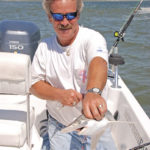
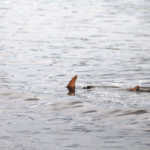
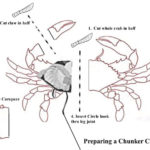
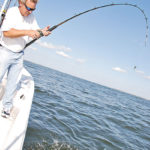
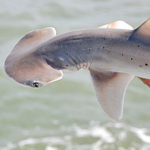
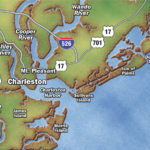
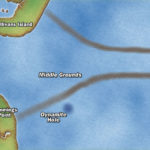
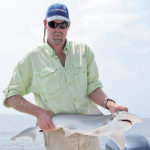




Be the first to comment